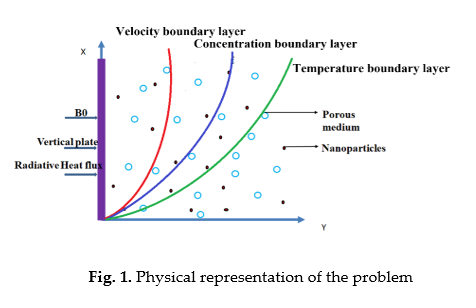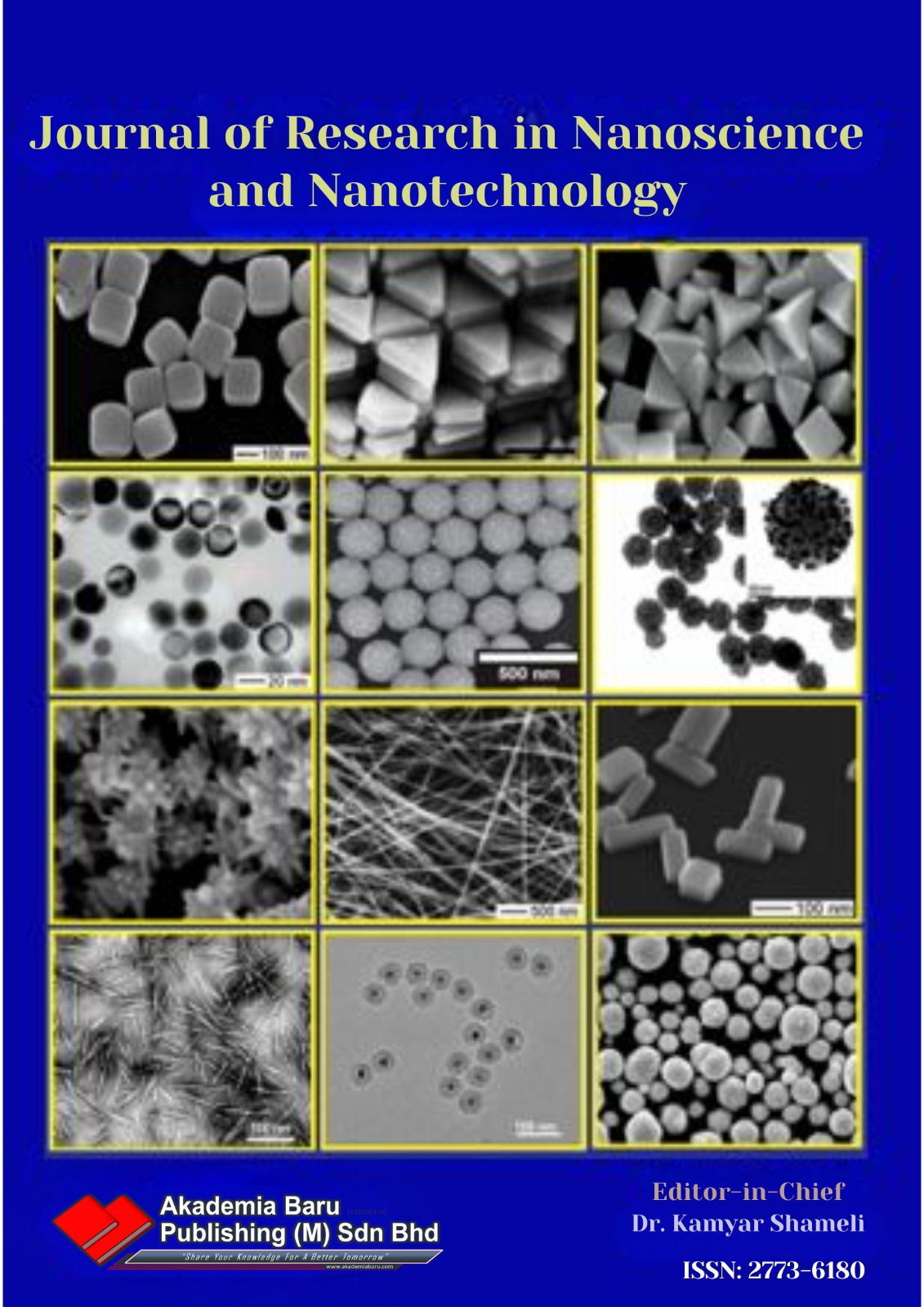Exact Analysis on Heat and Mass Flow Rates Computations over a Ramping Wall Boundary with C8H18/Al2O3 Based MHD Nanofluid Flow Past a Vertical Surface
DOI:
https://doi.org/10.37934/jrnn.15.1.122Keywords:
Ramped wall conditions, gasoline, aluminium oxide, method of integral transform, radiative heat flux, magnetic inductionAbstract
An exact solution is derived for parabolic equations with partial differentials for the analysis of the ramping wall boundary of a nanofluid flow, suspended aluminium oxide nanoparticle in the Gasoline influenced by magnetic and gravitational forces in a semi-infinite flow region using integral transform method. Rosseland's approximation is used for radiative heat flow in the energy equation, whereas Bousinessq's approach is used in the momentum equation. Fluid temperature, species concentration, and transport are solved using Heaviside, exponential and complementary error functions; friction drag, heat and mass transfer rates are solved using Gaussian error functions. Numerical calculations have been carried out for rate of heat transmission and Sherwood number is swotted to put in the form of tables while the temperature, transport and species concentration are graphically exhibited. Higher radiation parameters lead to an increase in fluid temperature. The velocity boundary layer is decreased by the magnetic field and the opposite behaviour observed in porous media parameters. The heat transfer rate drops as Prandtl number and radiation parameter grows for both ramping and isothermal situations, whereas increases when time, volume fraction and heat source parameter increases.While increasing the schimidt number Mass transfer increase Magnitudely for both cases.
Downloads















